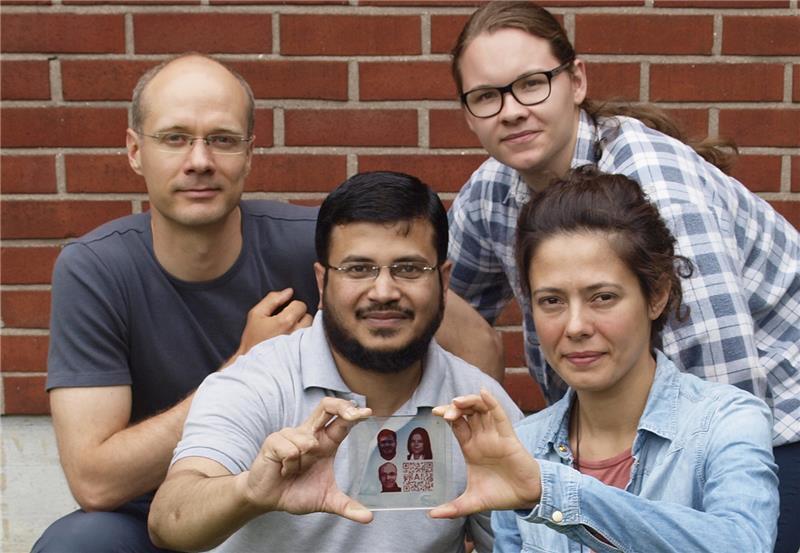Researchers at Aalto University have come up with an inexpensive inkjet-printed solar cell that can be made into text or images. Designed to be used with low-power devices, it has already shown performance and durability comparable to that of existing organic dye solar cells.
The cell is formed by inkjet printing a concentrated dye solution on a titanium oxide film, which acts as an electrolyte. This combination was originally developed by the Swiss École Polytechnique Fédérale de Lausanne and the Aalto team has applied it to form solar cells using an image file with darkness and transparency suitably adjusted for clarity and efficiency. The result is a colorful, patterned cell that can not only generate electricity, but is pleasing to look at and can convey information by text or digital code.
"The most challenging thing was to find suitable solvent for the dye and the right jetting parameters that gave precise and uniform print quality," says doctoral candidate Merve Özkan.

Testing of the finished cells showed they retained their 6.4 percent efficiency even after 1,000 hours of accelerated aging under simulated sunlight and an additional 1,154 hours of half-sunlight.
"The inkjet-dyed solar cells were as efficient and durable as the corresponding solar cells prepared in a traditional way," says postdoctoral researcher Ghufran Hashmi. "They endured more than one thousand hours of continuous light and heat stress without any signs of performance degradation"
The research results were published in Energy & Environmental Science.
Source: Aalto University






